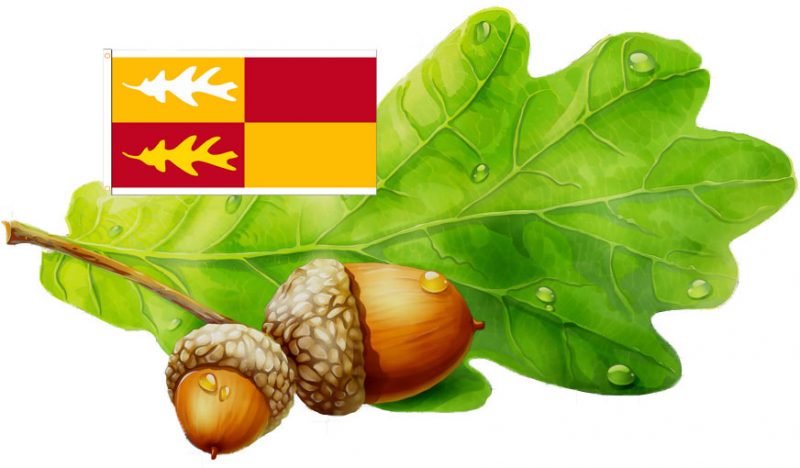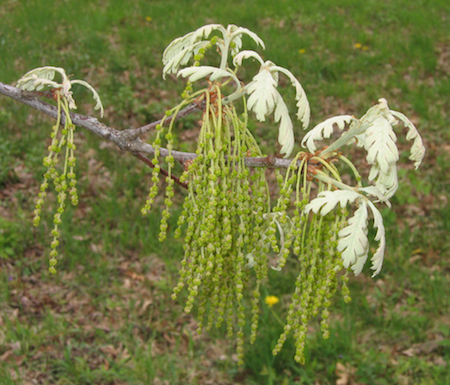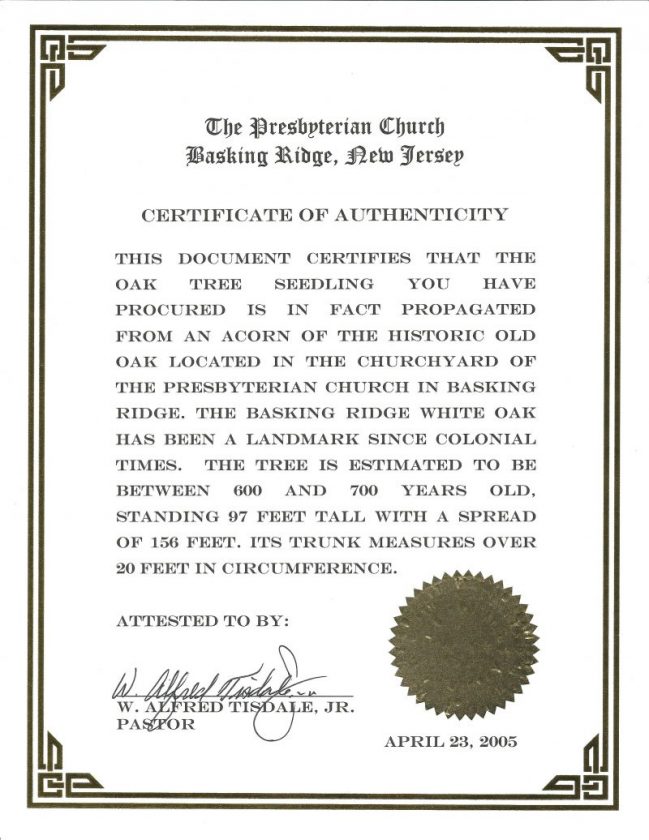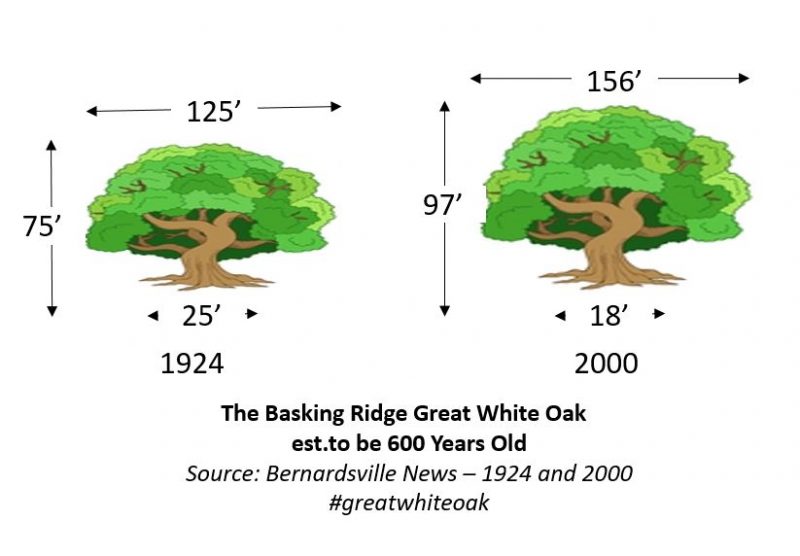
On the anniversary of the 2017 loss of its 619-year-old oak tree in Basking Ridge, New Jersey, the Mr. Local History Project has written a story of hope, commitment, honor, history, and township pride. Yes, people, there are children of the mighty oak that Basking Ridge residents lost.
As with all Mr. Local History retrospectives, updates are made to this post when we learn additional information. We will continue to expand this post as information becomes available. Mr. Local History Research Team
The Basking Ridge Oak Tree’s Tree Family
“As people of faith, we’re aware that with all living things on this side of Heaven, their time on this earth comes to an end. It is also true for very many of us that our hope lies in new life after the old has passed away.”
Rev. Dennis Jones , Basking ridge Presbyterian church – 2016
While the town of Basking Ridge, New Jersey, initially mourned losing its 619-year-old oak tree, the oldest white oak tree in North America, the town felt such excitement knowing that a 17-year-old sapling from the parent original oak tree was coming back home. While that happened, the happily ever after story has quite an exciting twist.
I thought the story was more than just an ordinary story. This is a story of historic proportions. If you ever go visit the Presbyterian Churchyard in Basking Ridge, you can see the circle of life in full swing as the acorn from the 619 former oak tree grows in the churchyard. But this sibling is not alone. The tree in the Basking Ridge cemetery has older siblings in Pennsylvania, Missouri, and Iowa.
Our story begins with a Basking Ridge granddaughter, Dee Williamson, and her grandfather, James, who, during their early childhood years together, took it upon himself to gather a few acorns from under the great white oak tree in Basking Ridge and plant them. These acorns grew unobstructed on a quiet farm while no one ever thought the Basking Ridge Oak Tree would die in their lifetime. Her grandfather’s acorns planted in the early 1950s did well. They did very well, thriving on the Pennsylvania soil. The saplings did so well that the grandfather decided to take two of the young saplings and plant them on a family cemetery plot in Eastern Pennsylvania.
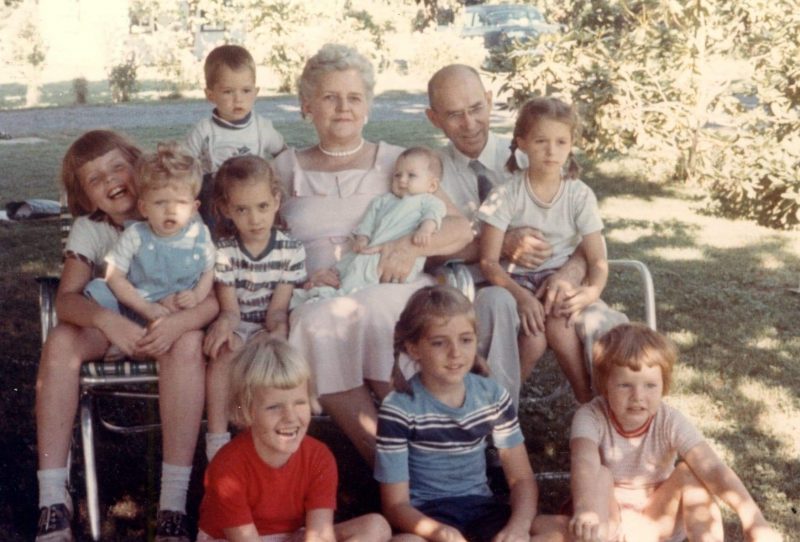
As history should note, while Dee grew up and became a teacher at Oak Street, Cedar Hill, and Liberty Corner, she had her Grandfather, James, a farmer. Not just any farmer, but a farmer who often came to visit his granddaughter to do grandfatherly things, such as attending church. And while he visited, they would share time attending services at the Basking Ridge Presbyterian Church. Anyone who attended church before 2017 couldn’t help but realize the presence of the great oak tree just outside the church doors.
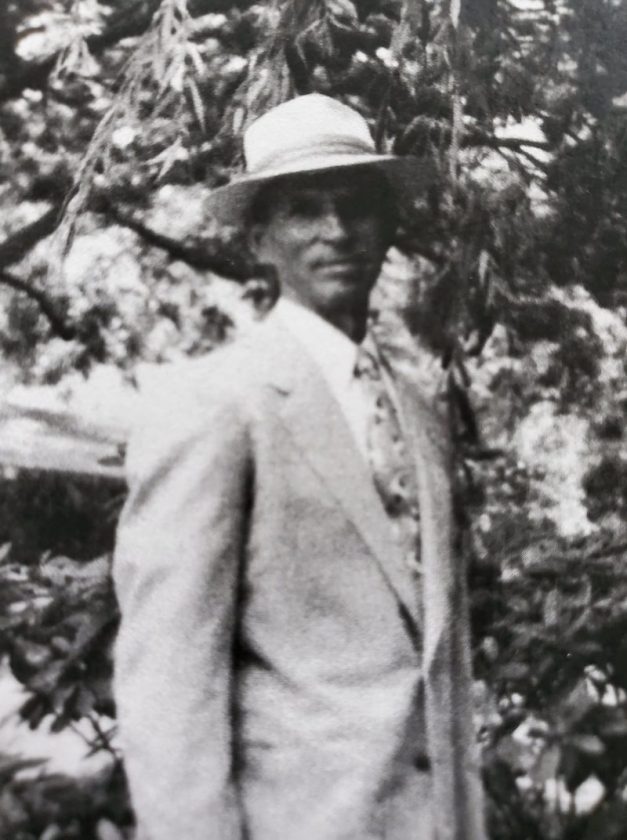
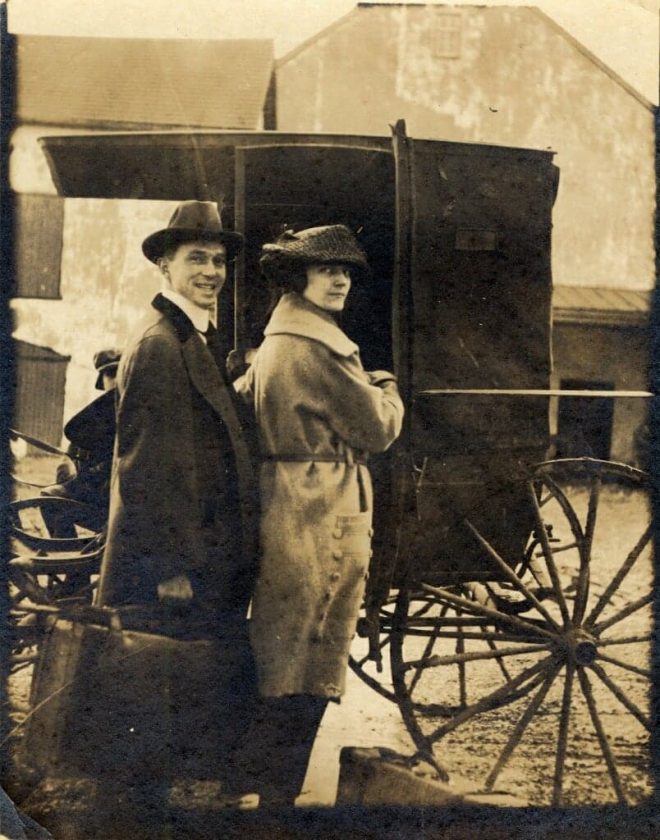
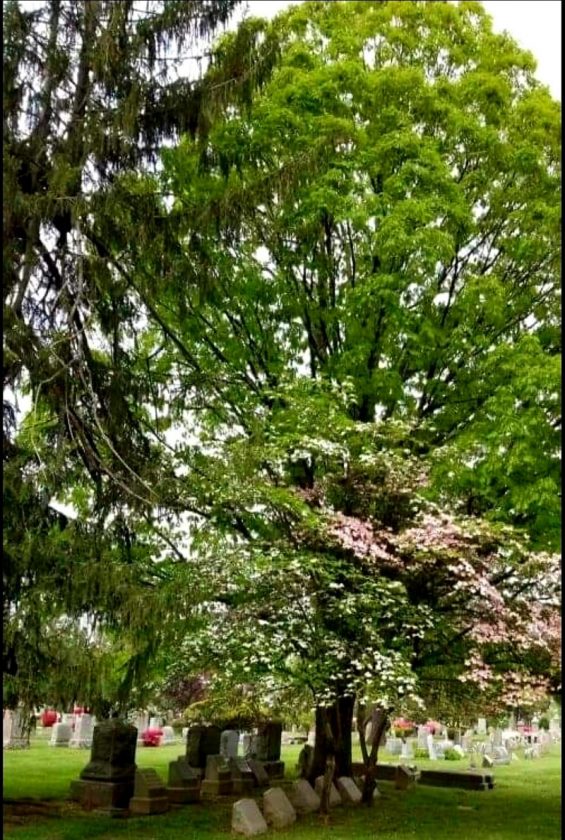
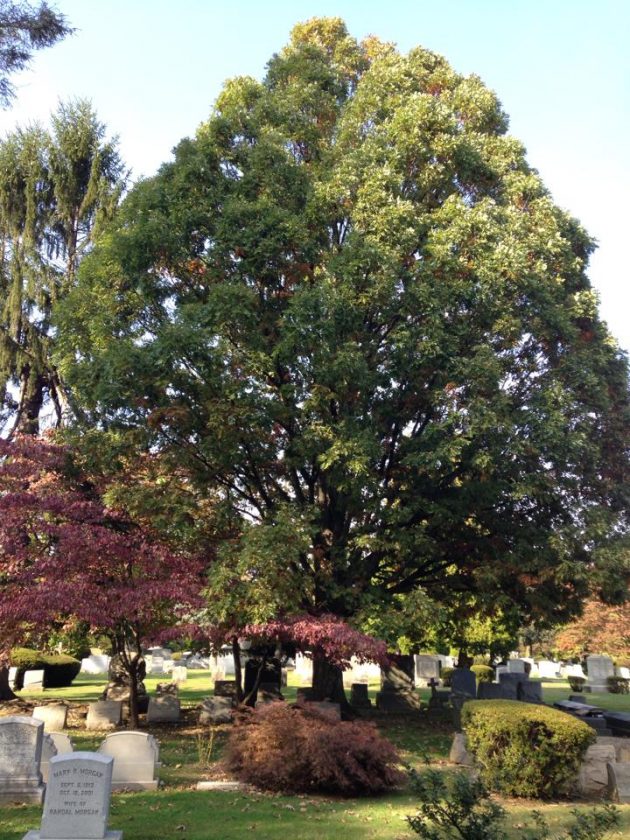
This offspring white oak tree was planted around 1950 making it over 60 years old, the oldest sibling to the mighty oak we know.
Grandfather James would pass in 1966 and is buried under his great white oak.
Over the years, he visited and cared for the offspring of the great oaks. When the grandfather passed away, the granddaughter knew the perfect place for his father to rest would be under the shade of North America’s most significant and oldest white oak tree.
Sibling Tree in the Church Yard
Union County College said goodbye to the “son” of the Basking Ridge oak tree in a sunny, heartfelt ceremony held on the Union County College Cranford campus Tuesday morning, August 11, 2017. It made the 17-mile journey to the Basking Ridge Presbyterian Church northwest cemetery. Tom Ombrello has spent many years creating UCC’s historic tree nursery.
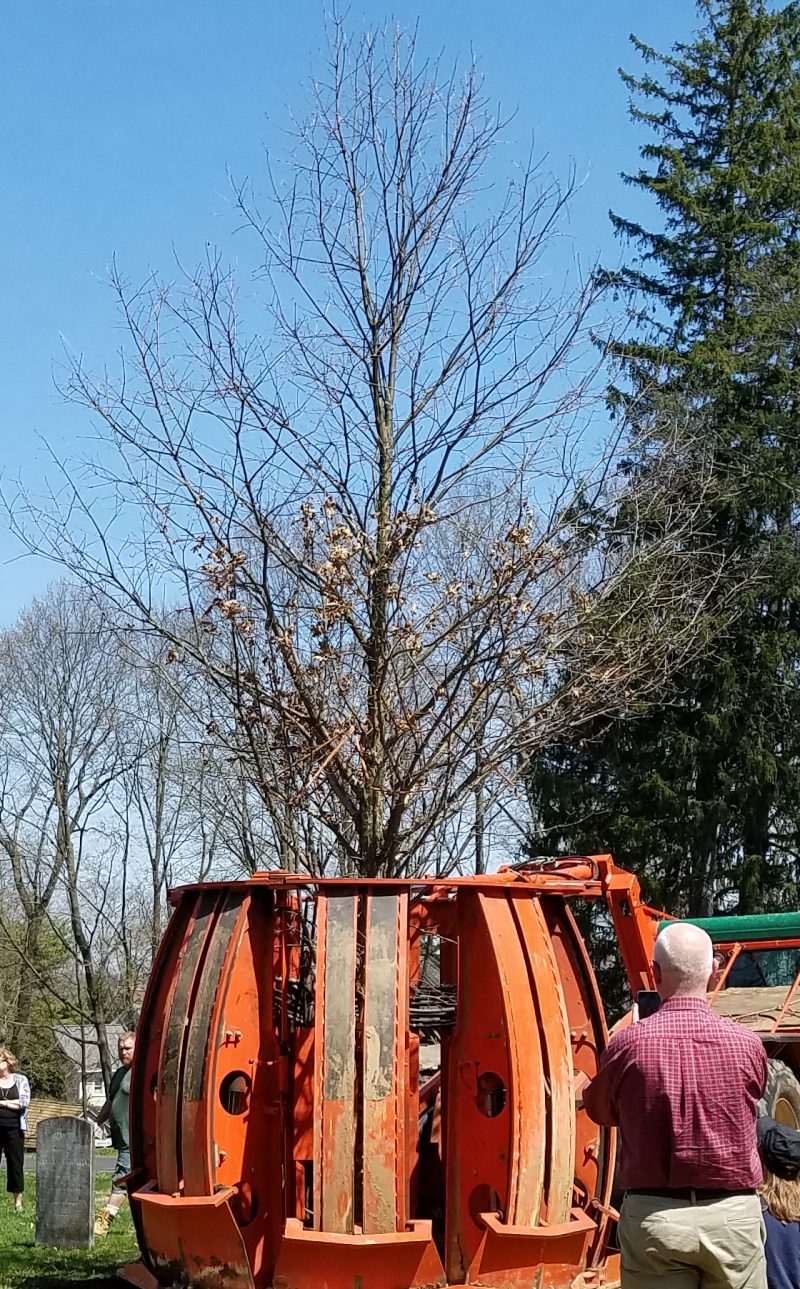
The nursery contains 95 oaks, maples, locusts, willows, sycamores, and more that come from the homes of presidents and other historical figures, from George Washington to FDR, from the Wright brothers to Charles Lindbergh, from Booker T. Washington to Martin Luther King. 95 oaks, maples, locusts, willows, sycamores, and more come from the homes of presidents and other historical figures, from George Washington to FDR, the Wright brothers to Charles Lindbergh, and Booker T. Washington to Martin Luther King. But Ombrello admitted that he knew he had to have one tree in his nursery, seedlings from the great oak tree in Basking Ridge, which he had been following for years.
“I’m sure if I wasn’t a biology professor, I would have become a history professor. I knew I had to have a sapling from the historic Basking Ridge oak tree.”
Professor Tom Ombrello – Union County College – The tree grove is featured in book called “Exploring Gardens & Green Spaces”.
The original majestic oak tree didn’t significantly shed acorns until 2001. When it did, Ombrello and a student collected two five-gallon buckets of acorns and tended them in Ombrello’s greenhouse. The acorn that created the strongest, fastest sapling was planted in the tree grove and prospered there until it was transported to the Basking Ridge Presbyterian Church to rest in a spot near its predecessor. That would make the offspring somewhere around 21 years old.
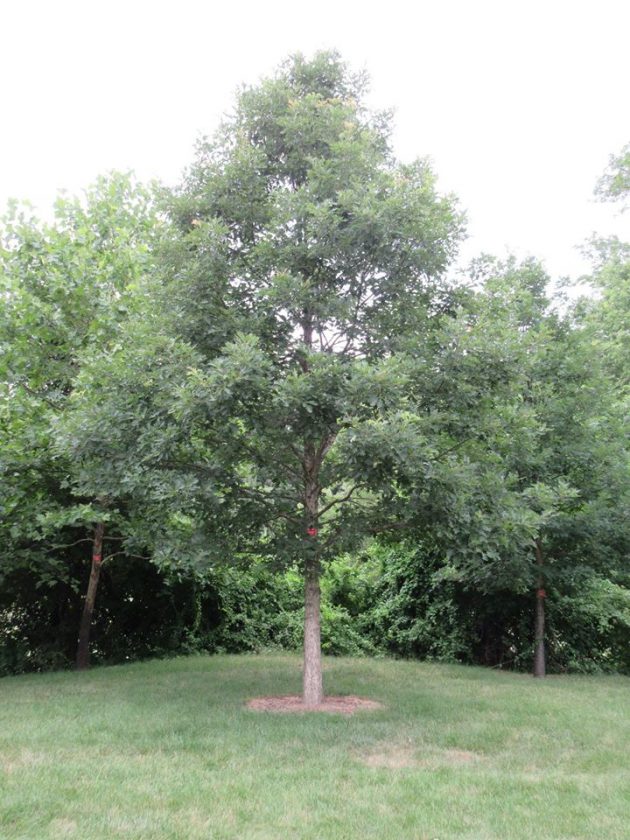
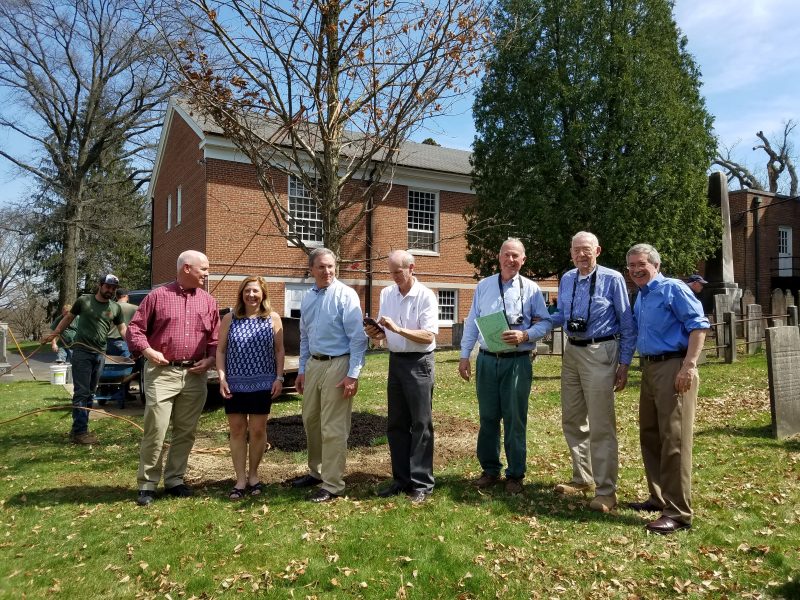
On some individual white oak trees, the lower branches become gnarled and grow horizontally to the ground. While they aren’t commonly found in nurseries due to their slow rate of growth, white oaks are prized landscape specimens for the shape of their wide-spreading branches. The slow-growing trees are also long-lived, with specimens surviving for hundreds of years. Due to its slow growth, the white oak is difficult to transplant successfully, making a full-grown oak even more valuable. Maintaining these trees in a healthy and strong state can sometimes require human intervention.
Did you ever wonder what those stringy things are all over your oak tree’s lawn? They are called oak flowers. Quercus alba produces both male and female flowers. And many people are unaware that it can take up to 20 years for a white oak to start producing acorns. Once they do make, they can come in thousands at a time. Acorns, the fruit of the oak tree, are about 3/4 inch long, egg-shaped with a shallow cap, and require the entire season to grow to maturity. It is also noted that white oaks will produce up to five times the average amount of acorns when it know it’s dying.
The wood from white oaks is known to contribute to bourbon’s attainment of its amber hue and rich flavor. This is why the barrels distillers use for their bourbon are usually constructed from white oak. The white oak tree grows from southern Canada to Florida and as far west as Minnesota. It is the state tree of Illinois, Maryland, and Connecticut.
More Siblings in Unionville, Missouri, and Storm Lake, Iowa
Early research indicates that other Basking Ridge oak tree siblings exist in Unionville, Missouri, and Storm Lake, Iowa. Both trees look to be in the 20-30-year growth range, similar to the one from Cranford, New Jersey in the Basking Ridge Presbyterian churchyard. We’re looking into how and when these acorns were planted.
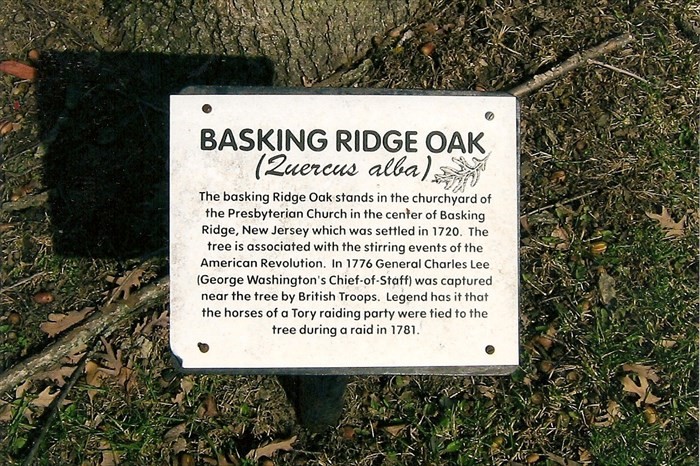
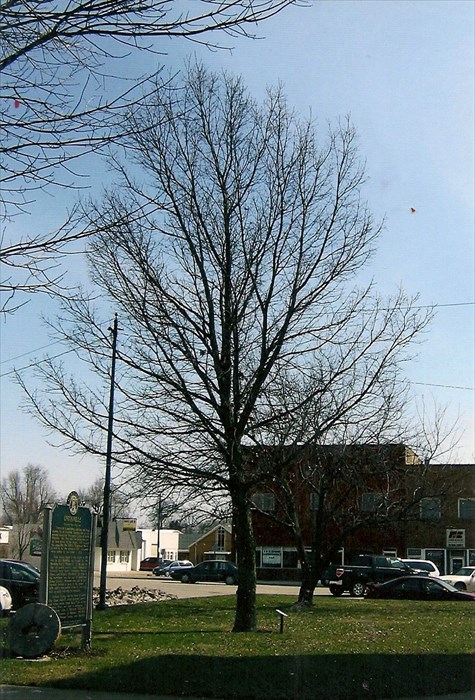
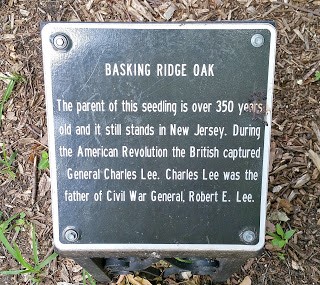
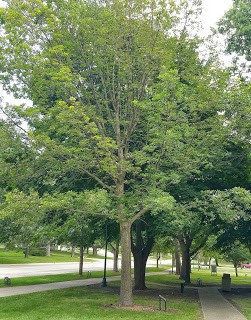
Is Anyone Else Raising A Sibling of the Basking Ridge White Oak?
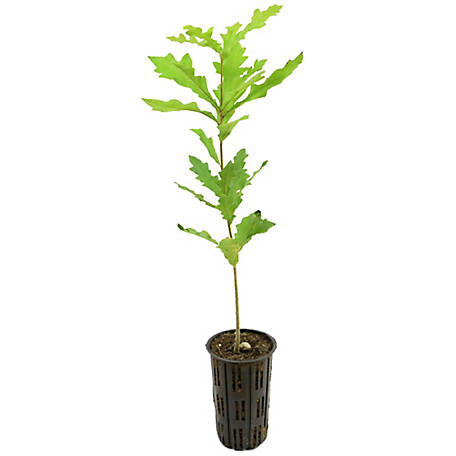
In the 1980s, the Basking Ridge Presbyterian Church held several fundraisers selling acorn saplings nurtured under the fatherly (or motherly) Basking Ridge oak. We’d love to hear if anyone has one of these saplings, as they’re siblings to the tree behind the Basking Ridge Presbyterian Church.
The Basking Ridge Presbyterian church held sales of oak tree saplings in 2005. Dr. Thomas Ombrello raised those saplings and, in 2017, donated his sibling back to the church.
In 2005, Ombrello‘s 100 saplings propagated from acorns were sold as a fund-raising project to renovate the Basking Ridge Presbyterian Church cemetery. A $50 donation bought a small pot, and a $100 donation secured a large pot. Each sapling was also sold with an official “Certificate of Authenticity.” Our research did find a Bernardsville News Letter to the Editor from Reverend Katheryn Henry from Peapack and Gladstone’s Reformed Church.
We’d love to hear if there are others out there. Please post below in the comments section.
Tidbits – The Stoic Quercus Alba
While some of the most prominent white oaks measure as tall as 150 feet, the average tree of this species grows between 80 and 100 feet high. The trunk’s diameter can exceed 4 feet, and the tree develops a broad, rounded appearance when mature. The white oak tree can grow over 100 feet tall, but on average, it typically reaches heights of 80 to 100 feet. However, the tree is never in a rush, as white oaks grow at a slow to medium rate, with height increases of anywhere from less than 12 inches to 24 inches per year. Some white oaks have been known to live for over 500 years and can exceed that by centuries if planted in the right environment.
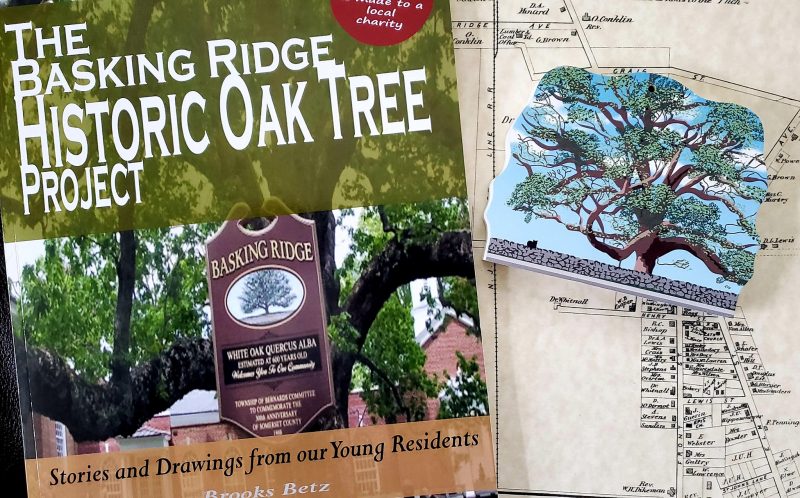
Click Here
More MLHP Local History Posts
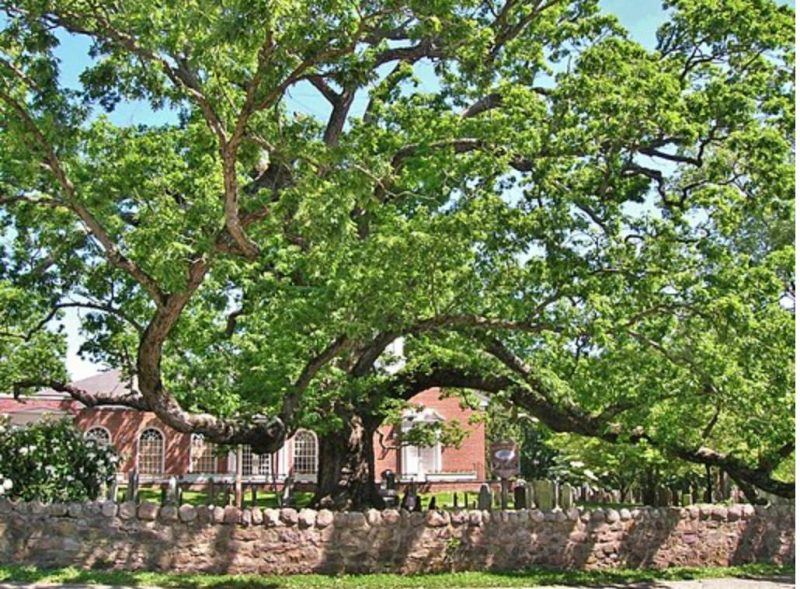
Special Thanks
Mr. Local History would like to thank Basking Ridge’s Jon Klippel for assisting with the research on this story. We know the tree is near and dear to his heart, and we thank him for his contributions.
History Doesn’t Write Itself without your support.
Support our non-profit that supports your local history
Like elite athletes at their peak, our history journalists are highly trained in digging up history. It takes skill, endurance, and pure will typing to deliver interesting stories of the life and times of the great history in New Jersey and the areas you love.
And that all costs more than just our time and energy. So we’re asking you to support us with more than your attention.
Please contribute today if you enjoy reading stories like these from our volunteer writers.
You’ll help power the dedicated team behind this story and hundreds of others like it.
Your contribution is tax-deductible as we are an IRS-recognized 501C-3 non-profit education charitable organization.


